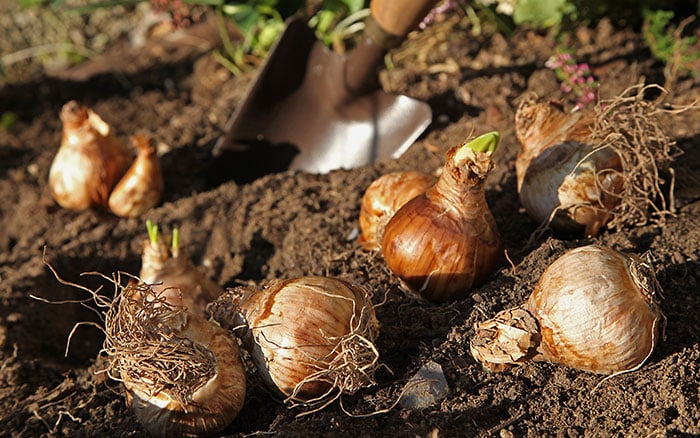Bulbs are a must for any garden. They are easy to grow and for little effort and maintenance will grace your garden with colour for weeks. When gardening, you’ll hear the buzz words like corms, tubers, rhizomes – but what are the differences? Find out exactly how to tell them apart.
What are bulbs?
When talking about bulbs, they can be referred to as corms, rhizomes, and tubers, as well as ‘true bulbs’ like daffodils and tulips.
On the whole, bulbs are storage structure that provide the genetic material for the plant as well as the food to give it a growth boost.
Choose the right mix of bulbs to suit your garden, then you can enjoy the beauty of bulbs all year round.

True bulbs

Firstly, there are true bulbs. These types are built up of layers of scales which store food for the plant as well as protecting the stem and flower that are at the core of the bulb.
With true bulbs, there are a further two types. There are tunicate bulbs which have an outer papery skin which protects the scaley layers.
On the other hand, there are imbricate bulbs such as lilies, that don’t have a tunic covering on the outer layer.
When planting true bulbs, it is vital that the base points downwards to ensure the shoot grows upwards and the roots grow down further into the ground.
Daffodils and tulips are examples of true bulbs.
Corms
Next are corms which look similar to true bulbs, however their insides are solid – which can be seen if they are cut in half. When planting small corms, plant them about 5cm deep.
Also, in spring, the corms can be dug up and replanted individually to grow into new plants.
Gladiolus, grape hyacinths, and crocuses are grown from corms.

Rhizomes

Rhizomes are underground stems that store plant food and grow new growth. What’s more, they can easily be divided and replanted individually to form new plants because they have several buds along them.
These tend to grow near the surface of the soil horizontally.
Cannas, many irises, and ginger lilies are grown from rhizomes.
Tubers
Finally, tubers are swollen stems that are food stores and have eyes, or nodes.
They can be propagated easily by splitting the tuber, as long as there are eyes on each part.
Dahlias, tuberous begonias, and calla lilies are grown from tubers.


Leave A Comment